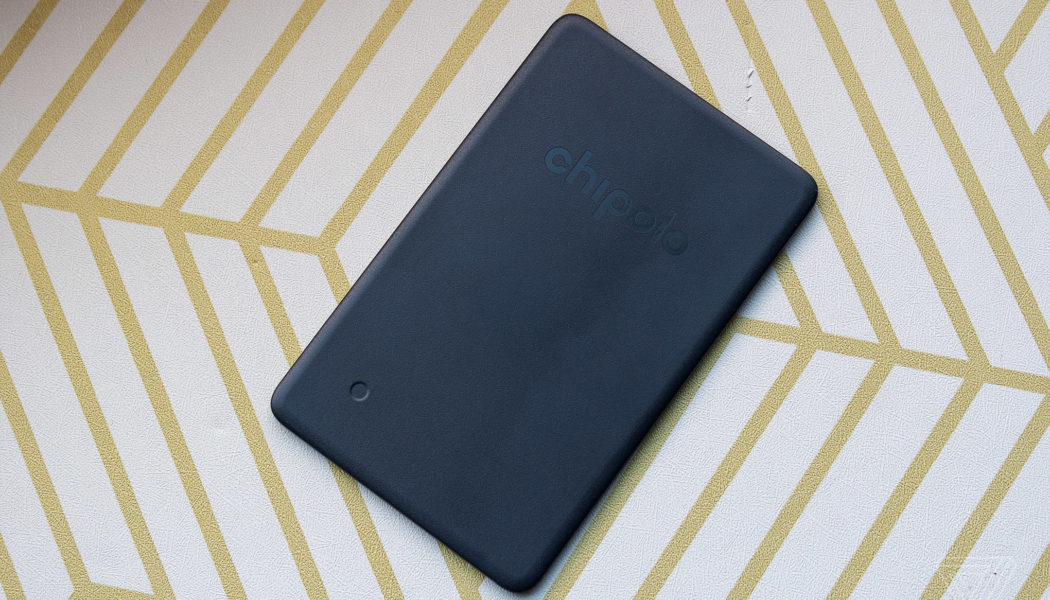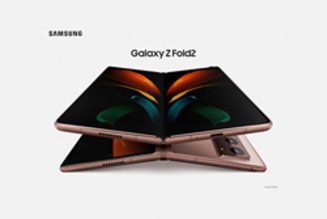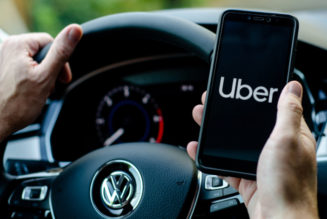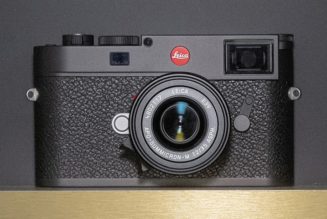Item trackers were made for absent-minded people like me. Not a day goes by that I don’t ping my iPhone from my Apple Watch so I can find where I left it. I usually need it so I can open the Find My app to find my keys. I’ve misplaced my phone in the fridge, lost my wallet in the Minneapolis-St. Paul international airport, and left my passport behind on the greasy counter of a Queens diner. Given my dismal track record, I was eager to try the $35 Chipolo Card Spot — a slim card-shaped Bluetooth tracker that works on Apple’s Find My network.
I was also a bit wary. The Find My network is so accurate that it borders on creepy, especially when you look at all the recent reports of people discovering they’d been tracked by unknown AirTags. It’s an issue that Apple has officially acknowledged and the company recently said it’d beef up AirTag safety features. However, this isn’t an AirTag. It’s a third-party tracker using Apple’s network — and I wasn’t sure how that’d translate in real life.
Chipolo has been around for a while and the Card Spot is not reinventing the wheel. None of the technologies it uses are exactly new. Technically, the Chipolo One Spot was the company’s first Find My tracker. The Card Spot, which was announced back at CES 2022, is just a new form factor. And in the design department, the Card Spot is nearly identical to the Tile Slim.
Truly, I had a difficult time telling the two trackers apart. They’re basically the same size and width. Hell, they even share the same price and basic feature set. Both are loud, but neither is dramatically louder than the other. The Card Spot gets up to 105 decibels, while the Slim goes up to 108 decibels. (That’s about as loud as a power tool and a heck of a lot louder than the AirTag’s chime at 60 decibels.) I hid the trackers in a closet under some pillows and had no trouble hearing either one from the other side of my apartment. The Slim has slightly better IP67 water resistance to the Card Spot’s IPX5 rating. The Card Spot also has a shorter estimated battery life at two years to the Slim’s three. Both are capable of sending you notifications, either when you leave the device behind or when it’s found.
So no, there’s not much to say about the Card Spot’s hardware. The only thing I’d keep in mind is that it’s not the best for slimmer wallets. I keep my ID, credit card, and my MetroCard in my Bandolier case. That’s not much, but it was still hard to cram the Card Spot in along with all that. I also have a card holder-style wallet and while I could fit the tracker in it, I had to get rid of some other cards to accommodate it. You’ll have a better time with a more traditional bi-fold or tri-fold wallet.
:no_upscale()/cdn.vox-cdn.com/uploads/chorus_asset/file/23342395/vsong_220323_5100_0005.jpg)
That said, we wouldn’t be talking about the Card Spot at all if it was about the hardware. The CardSpot might look identical to the Slim, but what makes it interesting is it operates more like an AirTag — albeit with a few limitations. For starters, it doesn’t have ultra-wideband. You’re firmly stuck within a 200-foot Bluetooth range. That means you still have to rely on sound to find your things instead of fancy AR arrows directing you to an exact location. However, unlike Tile’s trackers, the Card Spot can leverage Apple’s Find My network when you’re outside that range.
As a quick refresher, Find My works by leveraging Bluetooth signals from other Apple gadgets to relay your item’s location to the cloud. That means every Find My-enabled iPhone you come across acts as a sort of beacon. It’s what makes AirTags so freakishly accurate in more populated areas. Tile has a similar network, but it’s not as effective because there just aren’t as many Tile devices out there.
For example, I recently ran some extensive tests to see compare the accuracy of a Tile tracker versus an AirTag when outside Bluetooth range. While I could frequently see the AirTag’s location in real-time, several hours could go by before I’d get a rough ballpark of where the Tile was. The Chipolo lies somewhere in the middle.
:no_upscale()/cdn.vox-cdn.com/uploads/chorus_asset/file/23342391/vsong_220323_5100_0001.jpg)
While commuting into the city with my husband, I had him stick the Card Spot into his wallet (with his consent, of course). He gets off several stops before I do, but I didn’t get notified that I had “left the tracker behind” until about two stops later. I could see the Card Spot’s last-known location was where my husband had gotten off — but not much else. And while I was notified relatively quickly, it wasn’t helpful in that particular scenario.
:no_upscale()/cdn.vox-cdn.com/uploads/chorus_asset/file/23350202/IMG_2684.PNG)
That was only one scenario, however. There were plenty of times when I got timely left-behind notifications, too. I’m just saying these notifications work best in situations where you forget your bag at the coffee shop or in a friend’s car. As with AirTags, you can also enable Lost Mode. When Lost Mode is activated, you’ll get a notification when the Card Spot’s been found and can leave behind a number or message so anyone who finds it can contact you. It’ll also lock the Card Spot to your Apple ID so no one else can pair it.
I actually didn’t mind that the Card Spot wasn’t as accurate as the AirTag. It makes it less attractive for off-label uses like unwanted tracking. Whenever I had my husband carry the tracker, I could at times see where he was. Other times, not so much. The day when we commuted in together? It had him at the subway station for hours. That doesn’t mean the Card Spot is necessarily safe, however. If I were a bad actor, I’d still be able to glean sensitive information — just not as readily or in real-time. Ultimately, this isn’t Chipolo’s problem to fix on its own. It’s an industry-wide problem and in this case, Apple would have to do the bulk of the work to make Find My a safer experience. (Though we do have some specific recommendations.)
On the flip side, because the Card Spot uses the Find My network it has some of the same anti-stalking protections as the AirTag. Chipolo CEO Primož Zelenšek told The Verge that these protections were a “requirement to be part of the [Find My] program” but that Apple’s recent updates to beef up AirTag safety haven’t yet been applied to third-party accessories.
:no_upscale()/cdn.vox-cdn.com/uploads/chorus_asset/file/23342396/vsong_220323_5100_0006.jpg)
In practice, iPhone users will get a notification if an unknown Card Spot or One Spot has been traveling with them for a period of time. Android users get zilch unless they download Apple’s separate Tracker Detect app. My husband got multiple over the course of a few days. Each told him when the tracker had first been seen with him, along with a map showing where he’d been. He also had the option to play a sound to try and find the tracker. Given how much louder the Card Spot is, it’s easier to find — so long as you can get a decent Bluetooth signal.
This is a lot better than what Tile recently rolled out, which requires you to manually scan your surroundings. However, you won’t get any proactive sound alerts like the AirTag. (At least, my husband and I never heard one.)
Find My integration has other perks besides accuracy and anti-stalking features. The Card Spot is so easy to set up. All you do is open the Find My app, select “Add Other Item”, and press the Card Spot’s tiny button. I blinked and it was done. The best part was I didn’t have to download another friggin’ app like you do with Tile. You might not mind companion apps, but as a gadget reviewer, I have way more than I care to count. Making use of what already exists on my phone was a huge win in my book.
:no_upscale()/cdn.vox-cdn.com/uploads/chorus_asset/file/23350205/IMG_2673.PNG)
Find My adds a lot of benefits but it has one fundamental drawback: This tracker is exclusively for iPhone owners. Android users will have to opt for one of Chipolo’s non-Find My trackers or Tile. These are still great trackers, but they’re not quite as good at helping you find items lost outside your home. It’s a shame because the Card Spot doesn’t require an extra subscription to get left-behind alerts. With Tile, you’ve got to opt for Tile Premium ($29.99 annually) or Tile Protect ($99 annually) to get that particular feature.
Compared to the Tile Slim, I’d pick the Card Spot. The Slim does edge out the Card Spot in a few areas. I’ve actually been quite happy using it until now. But as an iPhone owner who loses things every day, the Find My network’s accuracy is more appealing and makes up for the Card Spot’s shortcomings.
Ultimately, this tracker is a great AirTag alternative. A single Card Spot only costs $5 more, it’s much louder, and its tradeoffs in accuracy are acceptable for anyone creeped out by AirTags. It’s also a much better choice if you want to track your wallet. AirTags are too round, too thick, and fall out easily. I’d argue Chipolo’s One Spot is also more economical for keys because it has a dang hole in it already. No need to buy accessories to make them immediately useful.
So no, the Chipolo Card Spot hasn’t brought anything new to the table. It’s not even the very best at what it does. But sometimes you don’t want the best of the best. You just want something that’ll get the job done without having to think too much about it. That, friends, is the Card Spot to a tee.
Photography by Victoria Song / The Verge









